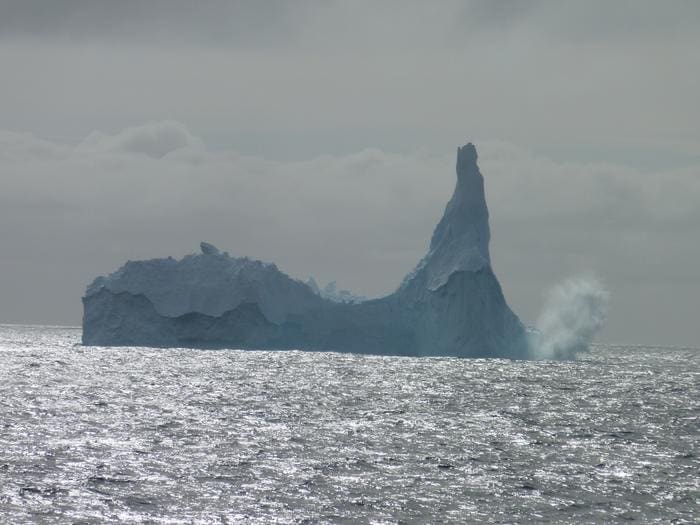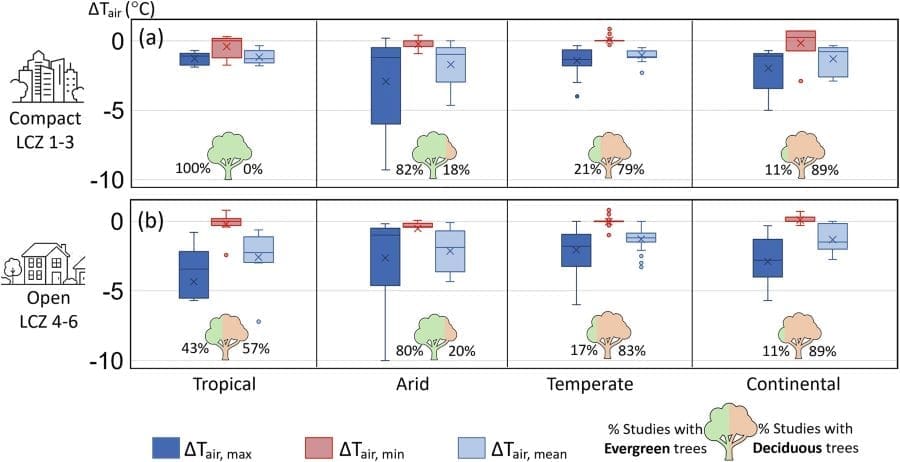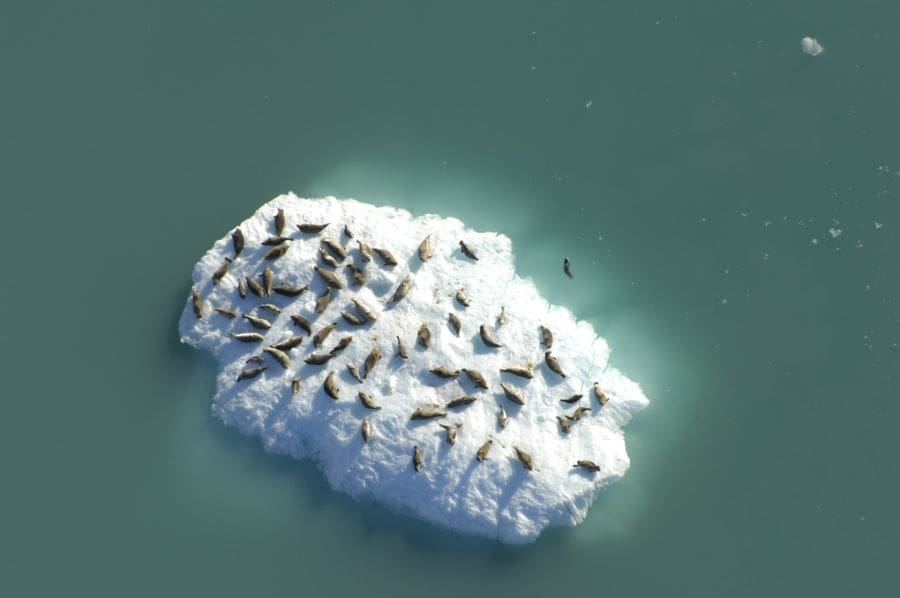Antarctica’s irregular heartbeat shows signs of rapid melting
Geoscientists led by Universities of Leicester and Southampton create new climate record for early Antarctic ice ages.
University of Leicester – Periods of sudden melting in the Antarctic ice sheet have been unearthed in a new climate record from over 20 million years ago by geoscientists led by the University of Leicester and the University of Southampton.
Published in the journal Nature Communications, the new study reveals how sensitive our planet’s early ice ages were to the effect of the Earth’s eccentric orbit around the Sun, suggesting the Antarctic ice sheet is less stable than has been assumed.
It also provides a glimpse of how the Antarctic may behave in a world without the Greenland Ice Sheet, which will melt if emissions continue unabated.

Records show that the Antarctic ice sheet has varied in size throughout its history. These variations in size occur regularly, just like a heartbeat. Existing records from different places in the ocean show different ‘rhythms’ in the heartbeat of early Antarctic ice ages. This should not be possible because the imprint of the waxing and waning of the Antarctic ice sheet on the climate record should be identical everywhere in the ocean, just as it should not be possible that your leg has a different pulse rate than your arm.
These heartbeat rhythms are caused by the shape of Earth’s orbit around the Sun over the course of hundreds of thousands to millions of years. On a more eccentric orbit, the Earth’s distance from the Sun will vary more throughout the year, exposing it to more heat when it is close in, and less when it is further away. The increasing heat changes Earth’s climate system, causing the ice sheet to melt, sometimes rapidly. When the Earth’s orbit is more circular, the ice sheet is more stable and less melting occurs.
This new study, funded by UK Research and Innovation/Natural Environment Research Council and the German Science Foundation (DFG) examines the period between 28 and 20 million years ago, when Earth was warmer than today and only the Antarctic ice sheets existed.
Using data obtained from geological cores recovered by an expedition of the Integrated Ocean Drilling Program (IODP), the research presents a new benchmark climate record to compare existing records to help scientists improve the accuracy of their climate models reconstructing past climate change. These insights into the past help them understand the impact of the melting of the Antarctic Ice Sheet in the future.
Lead author Dr Tim van Peer, from the University of Leicester School of Geography, Geology and the Environment, said: “From our research, we can see that the Antarctic ice sheet is more unstable than previously thought. We demonstrate how sensitive the geologically early Antarctic ice sheet was to changes in Earth’s orbit and axis.
“Past climate changes rapidly ended some of the early Antarctic ice ages and caused large amounts of melt. ‘Rapidly’ is on geological time scales, not as rapid as we can expect to happen during modern climate change.
“We cannot assume that the modern-day Antarctic ice sheet is stable. If climate emissions continue unabated, we are on course to melt a large amount of the Antarctic ice sheet. We need to mitigate climate change by reducing our emissions. This is the only way to not cross tipping points in the stability of the Antarctic ice sheet.”


The research analysed samples from geological cores obtained from the northwest Atlantic Ocean as part of an IODP expedition in 2012. Microorganisms from these cores record the chemistry of the ocean in the form of oxygen isotopes in their shells. By measuring the oxygen isotope ratio, the scientists can work out if the ice sheet has grown or shrunk, and establish a timeline from the depth of that sample in the cores.
Professor Paul Wilson, Principal Investigator on the project at the University of Southampton, said: “It may be a surprising thing to learn that we take the pulse of the Antarctic ice sheet by doing some simple chemistry on pinhead-sized fossil shells from the deep sea floor on the other side of the world. But the really beautiful thing is that we can do it back through the geological record over tens of millions of years. Earth science is about time travel into the past and we are always learning lessons to help us understand our future”
IODP is a publicly-funded international marine research program supported by 21 countries, which explores Earth’s history and dynamics recorded in seafloor sediments and rocks, and monitors sub-seafloor environments. Through multiple platforms – a feature unique to IODP – scientists sample the deep biosphere and sub-seafloor ocean, environmental change, processes and effects, and solid Earth cycles and dynamics. This specific research uses samples collected during Expedition 342 and has taken years of work from the combined efforts of a multinational partnership (mainly UK and Germany).
The University of Leicester has been involved in IODP since the 1980s and participated in dozens of expeditions around the world. Over the last year, University of Leicester scientists participated in IODP Expedition 389 ‘Hawai’ian Drowned Reefs’ and Expedition 405 ‘Tracking Tsunamigenic Slip Across the Japan Trench (JTRACK)’.
Journal Reference:
van Peer, T.E., Liebrand, D., Taylor, V.E. et al. ‘Eccentricity pacing and rapid termination of the early Antarctic ice ages’, Nature Communications 15, 10600 (2024). DOI: 10.1038/s41467-024-54186-1
Article Source: Press Release/Material by University of Leicester
AI predicts Earth’s peak warming
Artificial intelligence provides new evidence that rapid decarbonization will not prevent warming beyond 1.5 degrees Celsius. The hottest years of this century are likely to shatter recent records.
Stanford University – Researchers have found that the global goal of limiting warming to 1.5 degrees Celsius above pre-industrial levels is now almost certainly out of reach.
The results, published in Geophysical Research Letters, suggest the hottest years ahead will very likely shatter existing heat records. There is a 50% chance, the authors reported, that global warming will breach 2 degrees Celsius even if humanity meets current goals of rapidly reducing greenhouse gas emissions to net-zero by the 2050s.
A number of previous studies, including the authoritative assessments by the Intergovernmental Panel on Climate Change, have concluded that decarbonization at this pace would likely keep global warming below 2 degrees.
“We’ve been seeing accelerating impacts around the world in recent years, from heatwaves and heavy rainfall and other extremes. This study suggests that, even in the best case scenario, we are very likely to experience conditions that are more severe than what we’ve been dealing with recently,” said Stanford Doerr School of Sustainability climate scientist Noah Diffenbaugh, who co-authored the study with Colorado State University climate scientist Elizabeth Barnes.
This year is set to beat 2023 as Earth’s hottest year on record, with global average temperatures expected to exceed 1.5 degrees Celsius or nearly 2.7 degrees Fahrenheit above the pre-industrial baseline, before people started burning fossil fuels widely to power industry. According to the new study, there is a nine-in-ten chance that the hottest year this century will be at least half a degree Celsius hotter even under rapid decarbonization.

Using AI to refine climate projections
For the new study, Diffenbaugh and Barnes trained an AI system to predict how high global temperatures could climb, depending on the pace of decarbonization.
When training the AI, the researchers used temperature and greenhouse gas data from vast archives of climate model simulations. To predict future warming, however, they gave the AI the actual historical temperatures as input, along with several widely used scenarios for future greenhouse gas emissions.
“AI is emerging as an incredibly powerful tool for reducing uncertainty in future projections. It learns from the many climate model simulations that already exist, but its predictions are then further refined by real-world observations,” said Barnes, who is a professor of atmospheric science at Colorado State.
The study adds to a growing body of research indicating that the world has almost certainly missed its chance to achieve the more ambitious goal of the 2015 Paris Climate Agreement, in which nearly 200 nations pledged to keep long-term warming “well below” 2 degrees while pursuing efforts to avoid 1.5 degrees.
A second new paper from Barnes and Diffenbaugh, published in Environmental Research Letters with co-author Sonia Seneviratne of ETH-Zurich, suggests many regions including South Asia, the Mediterranean, Central Europe, and parts of sub-Saharan Africa will surpass 3 degrees Celsius of warming by 2060 in a scenario in which emissions continue to increase – sooner than anticipated in earlier studies.
Extremes matter
Both new studies build on 2023 research in which Diffenbaugh and Barnes predicted the years remaining until the 1.5 and 2 degrees Celsius goals are breached. But because these thresholds are based on average conditions over many years, they don’t tell the full story of how extreme the climate could become.
“As we watched these severe impacts year after year, we became more and more interested in predicting how extreme the climate could get even if the world is fully successful at rapidly reducing emissions,” said Diffenbaugh, the Kara J Foundation Professor and Kimmelman Family Senior Fellow at Stanford.
For a scenario in which emissions reach net-zero in the 2050s – the most optimistic scenario widely used in climate modeling – the researchers found a nine-in-ten chance that the hottest year this century will be at least 1.8 degrees Celsius hotter globally than the pre-industrial baseline, with a two-in-three chance for at least 2.1 degrees Celsius.
For a scenario in which emissions decline too slowly to reach net-zero by 2100, Diffenbaugh and Barnes found a nine-in-ten chance that the hottest year will be 3 degrees Celsius hotter globally than the pre-industrial baseline. In this scenario, many regions could experience temperature anomalies at least triple what occurred in 2023.
Investing in adaptation
The new predictions underline the importance of investing not only in decarbonization but also in measures to make human and natural systems more resilient to severe heat, intensified drought, heavy precipitation, and other consequences of continued warming. Historically, those efforts have taken a back seat to reducing carbon emissions, with decarbonization investments outstripping adaptation spending in global climate finance and policies such as the 2022 Inflation Reduction Act.
“Our results suggest that even if all the effort and investment in decarbonization is as successful as possible, there is a real risk that, without commensurate investments in adaptation, people and ecosystems will be exposed to climate conditions that are much more extreme than what they are currently prepared for,” Diffenbaugh said.
Journal Reference:
Noah S. Diffenbaugh, Elizabeth A. Barnes, ‘Data-Driven Predictions of Peak Warming Under Rapid Decarbonization’, Geophysical Research Letters 51 (23) e2024GL111832 (2024). DOI: 10.1029/2024GL111832
Article Source: Press Release/Material by Stanford University
Wrong trees in the wrong place can make cities hotter at night, study reveals
University of Cambridge – While trees can cool some cities significantly during the day, new research shows that tree canopies can also trap heat and raise temperatures at night. The study aims to help urban planners choose the best combinations of trees and planting locations to combat urban heat stress.
Temperatures in cities are rising across the globe and urban heat stress is already a major problem causing illness, death, a surge in energy use to cool buildings down, heat-related social inequality issues and problems with urban infrastructure.
Some cities have already started implementing mitigation strategies, with tree planting prominent among them. But a University of Cambridge-led study now warns that planting the wrong species or the wrong combination of trees in suboptimal locations or arrangements can limit their benefits.
The study, published in Communications Earth & Environment found that urban trees can lower pedestrian-level air temperature by up to 12°C. Its authors found that the introduction of trees reduced peak monthly temperatures to below 26°C in 83% of the cities studied, meeting the ‘thermal comfort threshold’. However, they also found that this cooling ability varies significantly around the world and is influenced by tree species traits, urban layout and climate conditions.

“Our study busts the myth that trees are the ultimate panacea for overheating cities across the globe,” said Dr Ronita Bardhan, Associate Professor of Sustainable Built Environment at the University of Cambridge.
“Trees have a crucial role to play in cooling cities down but we need to plant them much more strategically to maximise the benefits which they can provide.”
Previous research on the cooling effects of urban trees has focused on specific climates or regions, and considered case studies in a fragmented way, leaving major gaps in our knowledge about unique tree cooling mechanisms and how these interact with diverse urban features.
To overcome this, the authors of this study analysed the findings of 182 studies – concerning 17 climates in 110 global cities or regions – published between 2010 and 2023, offering the first comprehensive global assessment of urban tree cooling.
During the day, trees cool cities in three ways: by blocking solar radiation; through evaporation of water via pores in their leaves; and by foliage aerodynamically changing airflow. At night, however, tree canopies can trap longwave radiation from the ground surface, due to aerodynamic resistance and ‘stomatal closure’ – the closing of microscopic pores on the surface of leaves partly in response to heat and drought stress.
Variation by climate type
The study found that urban trees generally cool cities more in hot and dry climates, and less in hot humid climates.
In the ‘tropical wet and dry or savanna’ climate, trees can cool cities by as much as 12 °C, as recorded in Nigeria. However, it was in this same climate that trees also warmed cities most at night, by up to 0.8°C.
Trees performed well in arid climates, cooling cities by just over 9°C and warming them at night by 0.4 °C.
In tropical rainforest climates, where humidity is higher, the daytime cooling effect dropped to approximately 2°C while the nighttime heating effect was 0.8 °C.
In temperate climates, trees can cool cities by up to 6°C and warm them by 1.5°C.
Using trees more strategically
The study points out that cities which have more open urban layouts are more likely to feature a mix of evergreen and deciduous trees of varying sizes. This, the researchers found, tends to result in greater cooling in temperate, continental and tropical climates.
The combined use of trees in these climates generally results in 0.5 °C more cooling than in cities where only deciduous or evergreen trees feature. This is because mixed trees can balance seasonal shading and sunlight, providing three-dimensional cooling at various heights.
In arid climates, however, the researchers found that evergreen species dominate and cool more effectively in the specific context of compact urban layouts such as Cairo in Egypt, or Dubai in UAE.
In general, trees cooled more effectively in open and low-rise cities in dry climates. In open urban layouts, cooling can be improved by about 0.4 °C because their larger green spaces allow for more and larger tree canopies and a greater mix of tree species.
“Our study provides context-specific greening guidelines for urban planners to more effectively harness tree cooling in the face of global warming,” Dr Ronita Bardhan said.
“Our results emphasize that urban planners not only need to give cities more green spaces, they need to plant the right mix of trees in optimal positions to maximize cooling benefits.”
“Urban planners should plan for future warmer climates by choosing resilient species which will continue to thrive and maintain cooling benefits,” said Dr Bardhan, a Fellow of Selwyn College, Cambridge.
Matching trees to urban forms
The study goes further, arguing that species selection and placement needs to be compatible with urban forms. The orientation of the ‘street canyon’, local climate zones, aspect ratio, visible sky ratio and other urban features that influence the effects of trees all need to be carefully considered.
Although a higher degree of tree canopy cover in street canyons generally results in more cooling effects, excessively high cover may trap heat at the pedestrian level, especially in compact urban zones in high temperature climates. In such locations, narrow species and sparse planting strategies are recommended.
The researchers emphasise that we cannot rely entirely on trees to cool cities, and that solutions such as solar shading and reflective materials will continue to play an important role.
The researchers have developed an interactive database and map to enable users to estimate the cooling efficacy of strategies based on data from cities with similar climates and urban structures.
Journal Reference:
Li, H., Zhao, Y., Wang, C. et al. ‘Cooling efficacy of trees across cities is determined by background climate, urban morphology, and tree trait’, Communications Earth & Environment 5, 754 (2024). DOI: 10.1038/s43247-024-01908-4
Article Source: Press Release/Material by University of Cambridge
Seals strategically scoot around the seas on icebergs
New study shows seal moms prefer slow and steady icebergs, while seals prefer faster ice in better foraging grounds later in the year.
American Geophysical Union – Harbor seals in icy regions use icebergs shed by glaciers as safe platforms to give birth, care for young and molt. New research finds that as glaciers change with the climate, the resulting changes in size, speed and number of icebergs affect seals’ critical frozen habitat. Mother seals prefer stable, slower-moving bergs for giving birth and caring for newborn pups, while in the molting season, they and the rest of the seal population favor speedier ice near the best foraging grounds.
“Our work provides a direct link between a glacier’s advance and seals’ distribution and behavior,” said Lynn Kaluzienski, a postdoctoral fellow at the University of Alaska Southeast who led the study. “Interdisciplinary studies like this one coupled with long-term monitoring campaigns will be important to understand how climate change will influence tidewater glacier fjord ecosystems in the future.”
Kaluzienski presented the findings at AGU’s 2024 Annual Meeting in Washington, D.C., on Tuesday, 10 December. From 9-13 December, #AGU24 brings together more than 30,000 scientists to discuss the latest in Earth and space science research.

The study focused on harbor seals and icebergs in Johns Hopkins Inlet and Glacier, located in Glacier Bay National Park, Alaska. Johns Hopkins is one of the few glaciers on Earth that is advancing (growing thicker and flowing forward into the fjord) rather than retreating due to global warming, partly thanks to its terminal moraine, comprising crushed rock and other sediment, which effectively barricades the front of the glacier from warmer ocean water that would increase the glacier’s melt rate.
But that wall of sediment reduces the number of icebergs the glacier sheds into the fjord. Fewer icebergs means less habitat for seals, making it crucial that researchers understand how seals use the icebergs available to them.
Kaluzienski, university colleagues, and collaborators from the U.S. National Park Service spent the last few years documenting fine-scale variations in icebergs and in the distribution of seals in the fjord, using time-lapse cameras and aerial photographic surveys.
“Icebergs are found throughout the fjord in regions of fast flow, within eddies, and close to the glacier,” Kaluzienski said. “We wanted to understand which of these areas seals were using and how this habitat is changing in response to advances at the glacier front and reduction in iceberg numbers.”
When an iceberg breaks away from a glacier, its speed and path are affected by wind, ocean currents and freshwater runoff streaming from the base of the glacier. Called a plume, this jet of water is more buoyant than the salty ocean water in the fjord. The plume brings plankton and fish to the surface, creating a moving buffet that seals can snack on from icebergs.
The researchers used remote sensing data to find the plume and compared it to where icebergs and seals are during the pupping season in June and molting season in August. They found that during the pupping season, seals that were out of the water generally could be found on slower-moving icebergs, with speeds slower than 7-8 inches (0.2 meters) per second. Conversely, during the molting season, the seals were increasingly likely to be found on faster-moving icebergs in or near the plume.
It’s possible that icebergs in slower waters are more stable, giving adult seals a sturdier platform for caring for young pups. The stability of the ice may be less critical when the seals are molting, and bergs near the plume may offer more foraging opportunities.
Abstract information:
Lynn M Kaluzienski, Jason M Amundson, Jamie N. Womble, Andrew K. Bliss, Linnea E. Pearson, ‘Fine-scale variability in iceberg velocity fields and implications for harbor seals’ (C21F-0420; 10 December 2024; #AGU24)
Article Source: Press Release/Material by American Geophysical Union
Featured image credit: Gerd Altmann | Pixabay




